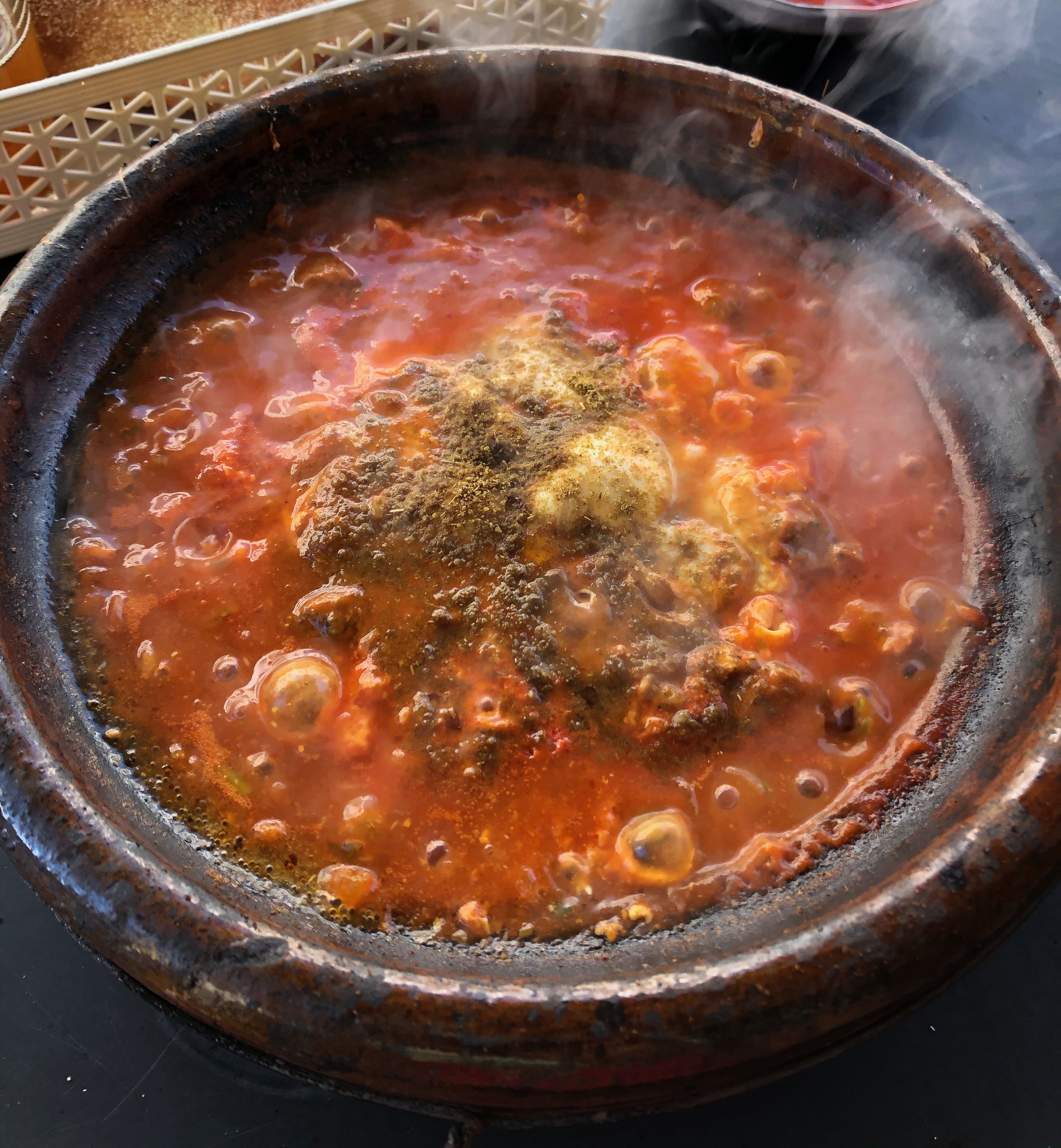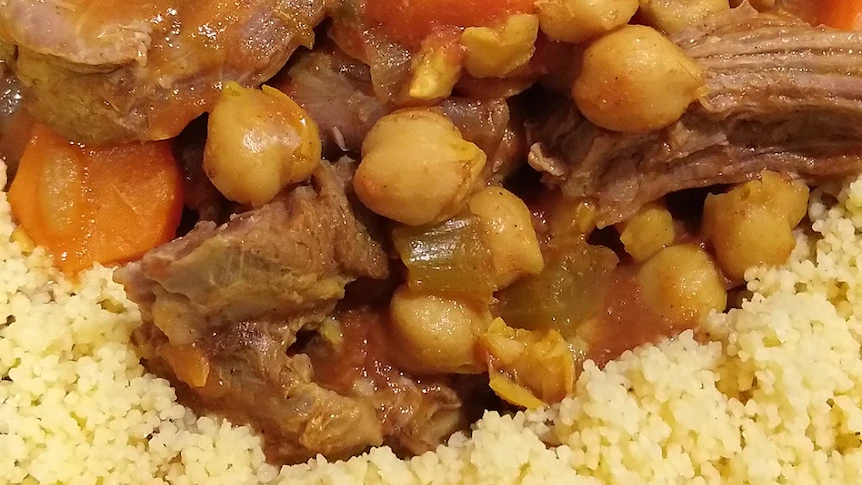Tahqayat - dishes stewed in earthenware pots (/ta.'qa.jat/)
As his compatriots sat in their circle aboard the galley and shared their stories and woes, the sailors' chatter soon turned to the matter of what and whom they missed the most dearly from their homeland. Amer listened as each of his compatriots in turn offered a variant of essentially the same answer: A wife or lover left awaiting them back home, a love interest whom they regretted having lost the chance to romance, or else broad musings on the robust, curvy forms and fiery, exciting dispositions of Takheti women. It seemed natural for sailors to talk of such things, more to impress each other than anything else. Amer, however, could only think of the rounded curves of a clay pot and the zesty cumin of his family's recipe for tahqayat, for the galley's fare was so limited. Day after day it was stale flatbread, salt-drowned meat, and weak ale for the sailors. Their only relief from this monotony was the yields from the pillaging of Andaeni orchards. Those pickled olives and dried fruits added an occasional touch of flavor to Amir's new lifestyle, but nothing could sate his longing for the warmth and tenderness of a family meal long stewed in a proper clay pot, nor was there any replacement for the warmth and tenderness of the family with whom he shared a hearth until recently.Though commonly mistaken for a distinct dish by outsiders, Tahqayat is better understood as an entire method and tradition of cooking, a Takheti cultural legacy perhaps as old as Takheti civilization itself. Tahqayat entails stewing meat, broth, onions, peanuts, sturdy greens, and usually a base of chaadan in a clay pot, usually for several hours or at the very least for long enough to soften the chaadan. The exact methods of heating the pot and stewing the ingredients vary with the circumstances of the cook; nomads will typically heat stones in a fire and then drop them into a pot to boil the water, and those living in built settlements will typically build a firepit or employ a clay brick hearth for the task. But in the hottest stretches of Vast Takhet that still remain habited, a cook may simply fill a pot with water and ingredients, cover it, and bury it in the earth around dawn, unearthing a fully cooked dish well before dusk. The main ingredients in tahqayat track with the cook's environment and circumstances, too. Working-class varieties of the dish are often limited to chaadan, onions, eggs, salt, and perhaps a sprinkling of cumin or some wild herbs. Nomads and others with semi-frequent access to meat will usually employ this method for preparing tender chunks of goat, whatever game has been caught overnight, or occasionally camel. Poultry is less common, but tahqayat can be a satisfying way to cook down the connective tissues in drumsticks, thighs, and other dark meat. Shellfish are occasionally cooked in this manner as well, though fish is usually too tender and falls apart too quickly to be suitable for a pot of tahqayat. Any carrots, other tubers, or most green vegetables included in the dish are imports. As tahqayat is typically cooked in an economical manner, sea salt and the broth itself are usually deemed adequate seasonings for household fare. The humblest preparations will make do with salt and plain water, trusting that the meat and vegetables themselves will yield a hearty if simple stew. Households which are not particularly impoverished, however, will often add cumin and garlic as well. Special occasions and attempts to spoil visitors will see the addition of any number of other spices as well, pending expense and availability, ranging from local spices such as fennel and coriander to pricey imports such as turmeric and dried, crushed chiles, not to mention the latest crop of peanuts harvested through significant labor.- Excerpted from The Shame of Wahaareh, a historical epic of anonymous authorship written about the Second Assault on Andaen.
History
This method of cooking is attested as far back as the early centuries of the Ancient Era, at which point the ancestors of the Takheti people had already made considerable advances in pottery.
Scholars of Takheti social history have generally settled upon Tahket Alay as the most likely place of origin for tahqayat. A mountain valley and once a lush river basin (before its gradual desertification), Takhet Alay not only served as the cradle of ancient Takheti civilization but also had access to abundant water—and abundant desert heat—that made tahqayat a natural cooking method for these ancient peoples. Though the traditional of tahqayat is inseparable from its staple chaadan, cave paintings and early historical documentation indicate that this cooking method originally arose for the sake of making game meat tender (or at least palatable) through extensive stewing.
The desertification of Takhet Alay spurred human migration, and by extension the movement of this cooking method, to both Far Takhet and Near (or Coastal) Takhet. The varieties of tahqayat cooked in the coastal desert of Far Takhet are thought to be more or less true to the original, ancient recipes, given Far Takhet's relatively low biodiversity and the nomadic, isolated, humble lifestyles of its inhabitants; the only notable change is the occasional addition of shellfish to the dish, an innovation as Takhet Alay is landlocked. Meanwhile, with the city-states of Near Takhet being well positioned to serve as trade hubs and bases for maritime warfare, this region's versions of tahqayat have exploded in variety, borrowing seasonings from across the Northern Ocean's trade routes and sometimes shellfish from the Haifatneh Sea. In the largest urban centers of Near Takhet, tahqayat recipes are occasionally catered to outsiders' palates as well, especially those of Andaeni and Haifatnehti merchants, but tahqayat is more often regarded as a humble household dish than one meant to impress visitors.
Numerous innovations—or bastardizations, depending on who one asks—in tahqayat recipes have also been seen in the Free City of Andaen, a populous hub for migrant workers including Takheti sailors and porters. The economical nature of this cooking method, plus the relative tolerance of Andaen's residents for foreign lifeways, has led to the rapid proliferation of tahqayat among the street food stalls of Andaen's working-class districts. Further, the city-state's oft-visited Sojourner's District sees tahqayat offered in a dizzying array of preparations and prices, adapted to the entire Continent's range of personal tastes and budgets.
Primary Related Location
Important Locations
Related Ethnicities




Comments